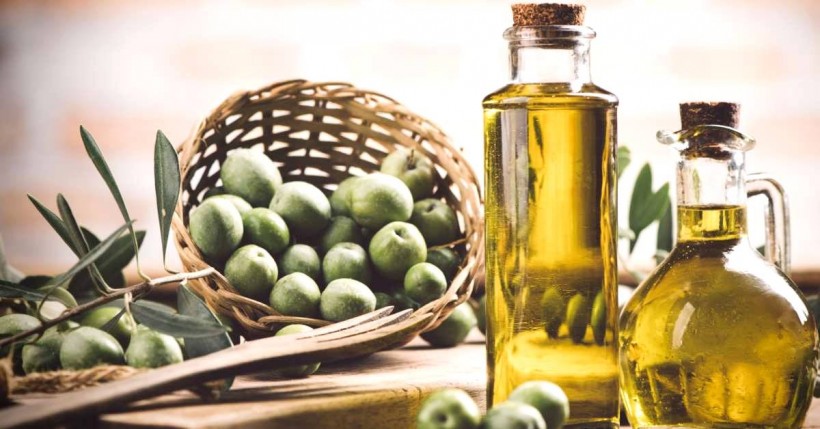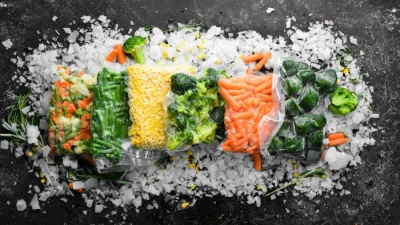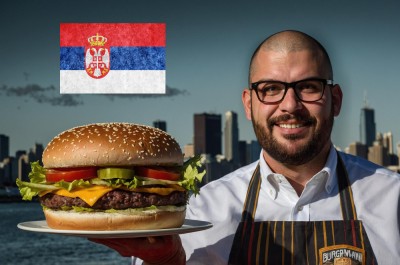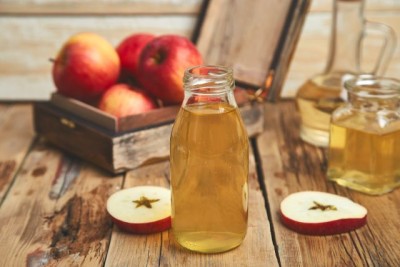14 Fake Olive Oil Brands
Warning: Undefined variable $post in /home/dietofli/public_html/wp-content/plugins/code-snippets/php/snippet-ops.php(584) : eval()'d code on line 3
Warning: Attempt to read property "ID" on null in /home/dietofli/public_html/wp-content/plugins/code-snippets/php/snippet-ops.php(584) : eval()'d code on line 3
The estimated reading time is 12 minutes
Warning: Undefined variable $post in /home/dietofli/public_html/wp-content/plugins/oxygen/component-framework/components/classes/code-block.class.php(115) : eval()'d code on line 3
Warning: Attempt to read property "ID" on null in /home/dietofli/public_html/wp-content/plugins/oxygen/component-framework/components/classes/code-block.class.php(115) : eval()'d code on line 3

How many times have you gotten frustrated with your choice when buying olive oil? You may have bought extra virgin olive oil in your local grocery store to make your favorite dish only to discover that it was fake.
Undoubtedly, olive oil belongs to the group of the most commonly used oils globally since it’s the healthiest. Unfortunately, it’s one of the most susceptible to scams as well.
You may have come across reports on social media revealing that 70 percent of olive oil which is sold in the U.S. is fraudulent. These reports claim that fake olive oils contain other oils in addition to only olive oil or don’t contain any olive oil.
You may have also seen lists containing fake olive oil brands in the news feed on your Facebook page. And if you’ve ever wondered where websites are getting their data, you may be shocked to learn that the only report that provides evidence of fake olive oil brands is from 2010. It was undertaken by researchers at UC Davis and in Australia.
The researchers examined fourteen imported brands and five brands of extra virgin olive oil produced in California which was being sold at retail stores. The oils were tested for quality and authenticity at the Australian Oils Research Laboratory in New South Wales by using chemical and sensory tests. At UC Davis, the oils were also tested by using chemical tests (1).
Compared to refined oils, extra virgin olive oils are extracted from olives without using solvents or heat.
One of the reasons why some of the olive oils had high failure rates in the study was that they didn’t taste good. Other reasons include:
- They contained refined olive oil.
- They underwent oxidation as a result of aging, increased temperature, or light.
- They were of poor quality, being extracted from overripe and damaged olives (2).
Lucini extra virgin olive oil was found to be the best, whereas the worst was Pompeian extra virgin oil among the tested olive oils.
It’s worth mentioning that UC Davis has issued a statement saying that the data presented in their 2010 report shouldn’t be used to assess the quality of olive oil brands sold today. But, even when the report was published, the researchers didn’t find that the olive oils they tested weren’t olive oil. They only found that some of the oils couldn’t be qualified as extra-virgin since they weren’t good enough.
So, before we present the 14 olive oil brands which have failed to reach extra virgin olive oil (EVOO) standards, let’s first explain what exactly extra virgin olive oil is.
What Is Extra Virgin Olive Oil?
Extra virgin olive oil is obtained from top-quality olives. It is less filtered and it’s an unrefined oil. It undergoes the least processing, which is why its flavor remains unaffected and it preserves its antioxidants, monounsaturated fatty acids, and vitamins. This is also the reason why it’s considered as the healthiest type of oil.
Compared to regular olive oil, extra virgin olive oil has a darker color and a fruity, peppery, bitter, and yet a more pleasant taste. It also has a pleasant fragrance. Many people find it to smell like fruit.
In addition to frying, this oil is also easy to use for baking and roasting.
Moreover, extra virgin olive oil is believed to offer various health benefits. Besides being high in important nutrients, this type of oil is believed to have the ability to benefit heart health, fight inflammation, prevent blood clotting, decrease oxidation of LDL cholesterol, lower blood pressure as well as lower the risk of stroke.
So, if you want to make sure that you get a real extra virgin olive oil the next time you reach for a bottle of olive oil in the supermarket, here are 14 fake olive oil brands:
14 Fake Olive Oil Brands You Should Avoid
- Pompeian
- Filippo Berio
- Pietro Coricelli
- Safeway
- Carapelli
- Mezzetta
- Primadonna
- Sasso
- Mazola
- Star
- Bertolli
- Antica Badia
- Colavita
- Whole Foods
Why Should You Avoid These Olive Oil Brands?
- These oils are made from old, rotten, and rancid olives, which is why they have a fatty, flavorless, and bitter taste.
- For most of these oils, you can’t tell the real source of the olives. Consumers need to know where the olives are coming from to avoid buying fake olive oil brands.
- Fake olive oil brands mix the extra virgin olive oil with a lower-grade, chemically refined olive oil or cheap oil.
- Prior to being labeled as extra virgin olive oil, the oil is flavored, colored, and perfumed.
- The price of fake olive oil brands is way lower than that of real extra virgin olive oil brands.
However, it’s worth mentioning that a more recent study has found a low occurrence rate of adulteration for 88 products qualified as extra virgin olive oil. Namely, the study found that only three of the samples didn’t meet purity criteria.
In addition, researchers evaluated the detection of adulteration by intentionally spiking EVOO samples with 10 percent of commodity oil, such as soybean, peanut, sunflower, canola, corn, safflower oils, and palm olein. Many of the samples didn’t meet purity criteria either.
The study was named Authenticity Assessment of Extra Virgin Olive Oil: Evaluation of Desmethylsterols and Triterpene Dialcohols and it was carried out in 2015 (3).
So, if we consider the two above-mentioned studies, we can conclude that there’re no clear and definite data to support the claim that there are lots of fake olive oil brands available on the market today. In fact, it turns out that most lists of fake olive oil brands are based on the above-mentioned 2010 report, which according to many people is outdated. However, this doesn’t mean that such brands don’t exist at all.
How To Spot Fake Olive Oil?
As we already said, olive oil is highly susceptible to scams. For example, soy or sunflower oil is often sold as olive oil. In addition, some olive oils which are of low quality are often qualified as extra virgin olive oil, which they are not.
The good thing is that you can identify whether your olive oil is the real thing or not. You can do this by checking the ingredients listed on the label on the bottle as well as by checking the color of the bottle, which has to be tinted or dark. You should also check where and when the olives were harvested as well as read the third-party authenticity label.
And last but not least, since fake brands tend to make bottles look more modern and sophisticated, do not let a bottle’s elegant appearance make you think it’s real olive oil.
You can check whether your olive oil is real at home too. To do this, you’ll need to place your bottle in the refrigerator at 32ºF for approximately five hours. If oil begins to solidify, this is a good sign. It means that there’s nothing suspicious about it. But, if the oil stays liquid, this indicates that it’s been mixed with low-cost vegetable oils, and it definitely can’t be qualified as an authentic extra virgin olive oil.
How Can You Buy Real Olive Oil?
-
Check storage conditions.
Extra virgin olive oil needs to be properly stored as oxygen, heat, time, and sunlight can adversely affect olive oil. Even if a bottle is kept under the fluorescent lights of a store for a longer period, this can also negatively affect the oil.
-
Check the harvest date.
Harvest date is always included in the label on the bottles of top-quality extra virgin olive oil brands. Olives are harvested in October, November, and December.
The best use is usually 2 years from the harvest date.
Also, if instead of the harvest date, the bottled-on or expiry date is written on the label, this signals ambiguity. You need to know the exact harvest date since this is an indication of the freshness of the oil.
-
Always buy olive oil from a trusted source.
Knowing the source is one of the crucial things you need to consider when buying olive oil. So, find a retailer who is interested in visiting the mills to observe the process and check the quality of the oil.
-
Olive oil needs to be kept in a dark glass bottle.
Keeping olive oil in such bottles helps prevent degradation. However, the oil is still not fully protected from light.
Bag or box packaging is very effective in protecting olive oil bottles from oxygen and light.
-
Read for COOC label.
California Olive Oil Council is a non-governmental trade association whose aim is to encourage certified EVOO consumption. So, when you see the COOC written on a bottle’s label, it means the oil has undergone the most rigorous tests which assure quality.
How To Spot Real Extra Virgin Olive Oil?
- Real extra virgin olive oil has a peppery and bitter flavor, which can be attributed to the polyphenols present in the oil.
- Authentic olive oil smells fresh, like something fruity. It never smells greasy or rancid.
- Avoid buying anything which isn’t labeled as “extra virgin olive oil.”
- Real extra virgin olive oil includes COOC in the label.
- Real extra virgin olive is always packaged in a glass bottle.
- Real extra virgin olive oil always includes a harvest date as well as a location in the label compared to fake olive oil brands which include “bottled on” or “best by” dates.
Frequently Asked Questions
-
Does Olive Oil Freeze?
Yes, it does. Olive oil can start solidifying at temperatures beginning around 12 ºC. The freezing point of olive oil is considered to be around -12 ºC. So, if you place olive oil in the refrigerator at -17 °C, it’s likely to turn into an olive oil ice cube.
However, freezing olive oil doesn’t affect it adversely since once it’s warmed, the oil will regain its normal consistency.
-
Is Terra Delyssa Real Olive Oil?
This type of oil contains 100% refined olive oil. It is produced by following a three-step process. The oil is decolored, deodorized, and neutralized.
Many people like using Terra Delyssa olive oil since the farmers directly offer it to consumers. In addition, every bottle of this brand contains a lot number as well as a production and validity date. The oil is also packaged in dark glass bottles, which protect the oil from oxygen and light. And Terra Delyssa controls the entire production process.
-
What Is NAOOA?
NAOOA stands for the North American Olive Oil Association which runs a certification program based on large and complete tests performed on randomly bought olive oils from stores. To have it included in their label as well as to use the AboutOliveOil.org (NAOOA’s website) seal on their packaging, olive oil brands need to have NAOOA test their oils as well as pay a fee.
Olive oil brands also agree that if they fail a test, they have to recall their oils from grocery stores in North America.
Olive oil brands which take part in the NAOOA program include:
- Colavita
- Goya
- Aldi
- Iliada
- Pompeiian
- Botticelli
- Whole Foods
- Filippo Berio
- Star
- La Tourangelle
- Guillen
- Napa Valley Naturals
- Sprouts
- Origin 846
- S. Foods
- Primal Kitchen
- Terra Delyssa
- Zoe
However, not all products of a brand are subject to testing.
And when it comes to European olive oil brands, those that have the P.D.O. seal included on their packaging fulfill strict quality requirements and adhere to traditional methods. Their origin is also always stated on their packaging. These oils are certified by the European Union.
What Are The Best Real Italian Olive Oil Brands?
The best Italian olive oil brands are:
- Coppini Classico
- Rocca
- Olio Carli
- Monini Extra Virgin Olive Oil
- Lucius Olio Extravergine di Oliva
Conclusion
- Olive oil is known as being the healthiest type of oil. However, it’s the most common type susceptible to scams too.
- One 2010 study which was carried out by researchers at the UC Davis and in Australia is the only study that offers evidence of fake olive oil brands.
- The reasons why some olive oil brands had a high failure rate in the study were that they were mixed with refined olive oil, they underwent oxidation, and they were made of poor-quality olives.
- The study included the following 14 fake olive oil brands:
- Pompeian
- Filippo Berio
- Pietro Coricelli
- Safeway
- Carapelli
- Mezzetta
- Primadonna
- Sasso
- Mazola
- Star
- Bertolli
- Antica Badia
- Colavita
- Whole Foods
- These olive oil brands should be avoided because their products are made from poor-quality olives, they have obscure origins, they mix the EVOO with refined or cheap oils, their olive oils are flavored, colored, and perfumed, and they’re incredibly cheap compared to real olive oil brands.
- Extra virgin olive oil is obtained from top-quality olives and it’s the least processed oil.
- To tell whether your olive oil is fake, check for the following things:
- The ingredients
- The color of the bottle
- Where and when the olives were harvested
- To make sure that you’re buying real olive oil, check the storage conditions and the harvest date, always purchase olive oil from a trusted source, and make sure it’s packaged in a dark glass bottle and has a COOC label.
- To spot real extra virgin olive oil, keep the following things in mind:
- Real extra virgin olive oil has a peppery and bitter flavor
- Authentic olive oil smells fresh, like something fruity
- Real extra virgin olive oil includes COOC in the label.
- Real extra virgin olive is always packaged in a glass bottle.
- Real extra virgin olive oil always includes a harvest date as well as a location on the label
- Avoid buying anything which isn’t qualified as “extra virgin olive oil.”














